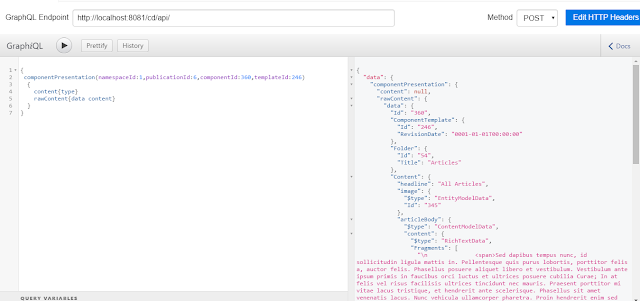Yet another successful, knowledgeable and full of fun SDL Tridion DX DEV Summit 2019, where people from across the globe participated and shared their thoughts and knowledge.
I would like to thanks to the organizers SDL and all the sponsors and special thanks to all the members of the SDL India community, who made this event possible. People from the different regions joined in this event and shared their knowledge, experiences with others. The event was scheduled for 2 days, where more than 14 speakers participated and 16 sessions.






















I would like to thanks to the organizers SDL and all the sponsors and special thanks to all the members of the SDL India community, who made this event possible. People from the different regions joined in this event and shared their knowledge, experiences with others. The event was scheduled for 2 days, where more than 14 speakers participated and 16 sessions.
Highlights of this year SDL Tridion DX India Dev Summit
Day 1, 29th March 2019
We started with celebrating the 10th anniversary of the MVP program where Sagar Hasamnis (Senior Director, SDL) presented his thoughts about this program and thanked the SDL community.
Jim Saunders (Chief Product Officer, SDL) Keynote speaker presented the vision and future of AI & The digital transformation of content he also demonstrates how this SDL helps us in the entire process from starting form Content Creator to Content Consumers.
After that, Ivo van de Lagemaat (Tridion DX Product Owner), he explained the SDL Tridion DX Roadmap and there was another session on the latest Extensions Management System where he explained the new Unified Extensions and its features, and how it will help in deployment and the best part is it will support the scale out. so if you have 2x CM and 4x Publishers it is a one-stop shop. I will be writing a separate blog on this starting with the Installation process, Features, and benefits.
Next speaker was Venu Ireddy (Solution Architect, SDL), Venu explained the features of DXA 2.1, and Search Module using Elastic Search and he also explained the difference between DXA 2.0 and 2.1.
After the amazing Lunch, it was Pankaj Gaur (Director, Content Bloom India) who started interacting with Audience with MentiMeter Game and then he presented how we can use SDL Tridion sites 9 feature Graphql with 8.5 also, we all loved it.
The last two sessions were taken by Naveen (Senior Consultant, SDL) presented the Tridion Docs, DD Module, and GUI using React and DXA and Rajesh Kumar (Technical Architect, Global Solutions, SDL) presented the new Content API & GraphQL with React based Web application.
Day 2, 30th March 2019
SDL ecosystem from Wilhard Rass (VP Professional Services, SDL) gave us brief information about what is going on in the SDL Tridion world, what cloud service has to offer and about the Partners and their roles.
The Experience Manager DEMO and features this was explained by Venu Ireddy (Solution Architect, SDL). Content Editors are really going to like this new GUI.
After the first session on day 2, we decided to have some fun and we played “dumb-charade”.
Next, Presenter was Manish Mehmood(Technical Consultant, Content Bloom India), Manish showcase how to customize the exiting DXA Form Module.
I also got the opportunity to present and my topic was How to Scale-out Publishing in Tridion sites 9 using Split deployers (Deployers Endpoint, Deployer Workers, Redis, ActiveMQ).[here]
Mark Van der wal (Chief Architect Cloud Operations) explained SDL cloud offerings, its advantages, and features.
Neetesh and Shalivahan (Technical Consultants, SDL) They explained the TridionDocs API integration this was the last session and we before all say goodbye, Event Closer by Sagar Hasamnis.






















Happy Coding and Keep Sharing!!





























